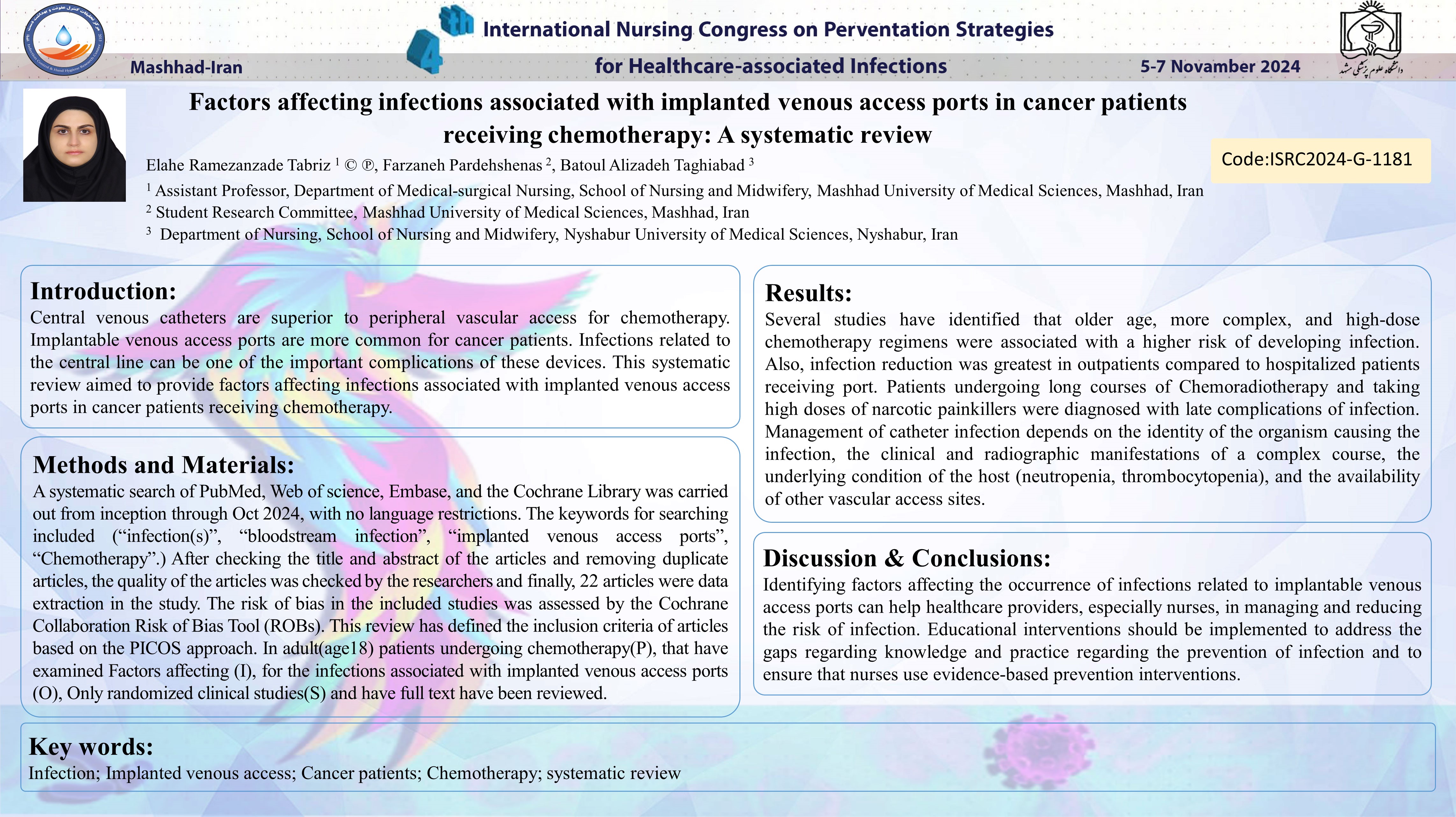Factors affecting infections associated with implanted venous access ports in cancer patients receiving chemotherapy: A systematic review
کد: G-1181
نویسندگان: Elahe Ramezanzade Tabriz © ℗, Farzaneh Pardehshenas, Batoul Alizadeh Taghiabad
زمان بندی: زمان بندی نشده!
دانلود: دانلود پوستر
خلاصه مقاله:
خلاصه مقاله
Introduction: Central venous catheters are superior to peripheral vascular access for chemotherapy. Implantable venous access ports are more common for cancer patients. Infections related to the central line can be one of the important complications of these devices. This systematic review aimed to provide factors affecting infections associated with implanted venous access ports in cancer patients receiving chemotherapy. Methods: A systematic search of PubMed, Web of science, Embase, and the Cochrane Library was carried out from inception through Oct 2024, with no language restrictions. The keywords for searching included (“infection(s)”, “bloodstream infection”, “implanted venous access ports”, “Chemotherapy”.) After checking the title and abstract of the articles and removing duplicate articles, the quality of the articles was checked by the researchers and finally, 22 articles were data extraction in the study. The risk of bias in the included studies was assessed by the Cochrane Collaboration Risk of Bias Tool (ROBs). This review has defined the inclusion criteria of articles based on the PICOS approach. In adult(age18) patients undergoing chemotherapy(P), that have examined Factors affecting (I), for the infections associated with implanted venous access ports (O), Only randomized clinical studies(S) and have full text have been reviewed. Results: Several studies have identified that older age, more complex, and high-dose chemotherapy regimens were associated with a higher risk of developing infection. Also, infection reduction was greatest in outpatients compared to hospitalized patients receiving port. Patients undergoing long courses of Chemoradiotherapy and taking high doses of narcotic painkillers were diagnosed with late complications of infection. Management of catheter infection depends on the identity of the organism causing the infection, the clinical and radiographic manifestations of a complex course, the underlying condition of the host (neutropenia, thrombocytopenia), and the availability of other vascular access sites. Conclusions: Identifying factors affecting the occurrence of infections related to implantable venous access ports can help healthcare providers, especially nurses, in managing and reducing the risk of infection.
کلمات کلیدی
Infection; Implanted venous access; Cancer patients; Chemotherapy; systematic review
